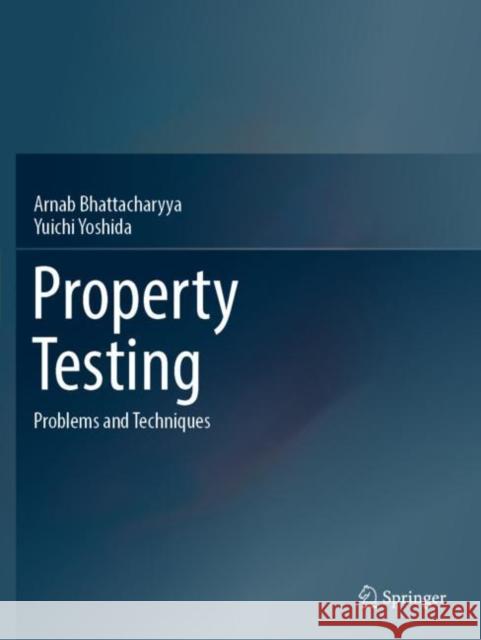Property Testing: Problems and Techniques » książka
Property Testing: Problems and Techniques
ISBN-13: 9789811686245 / Angielski / Miękka / 2023 / 427 str.
Property Testing: Problems and Techniques
ISBN-13: 9789811686245 / Angielski / Miękka / 2023 / 427 str.
(netto: 249,17 VAT: 5%)
Najniższa cena z 30 dni: 250,57
ok. 22 dni roboczych.
Darmowa dostawa!
This book introduces important results and techniques in property testing, where the goal is to design algorithms that decide whether their input satisfies a predetermined property in sublinear time, or even in constant time – that is, time is independent of the input size.This book consists of three parts. The first part provides an introduction to the foundations of property testing. The second part studies the testing of specific properties on strings, graphs, functions, and constraint satisfaction problems. Vectors and matrices over real numbers are also covered. The third part is more advanced and explains general conditions, including full characterizations, under which properties are constant-query testable.The first and second parts of the book are intended for first-year graduate students in computer science. They should also be accessible to undergraduate students with the adequate background. The third part can be used by researchers or ambitious graduate students who want to gain a deeper theoretical understanding of property testing.
This book introduces important results and techniques in property testing, where the goal is to design algorithms that decide whether their input satisfies a predetermined property in sublinear time, or even in constant time – that is, time is independent of the input size. This book consists of three parts. The first part provides an introduction to the foundations of property testing. The second part studies the testing of specific properties on strings, graphs, functions, and constraint satisfaction problems. Vectors and matrices over real numbers are also covered. The third part is more advanced and explains general conditions, including full characterizations, under which properties are constant-query testable.The first and second parts of the book are intended for first-year graduate students in computer science. They should also be accessible to undergraduate students with the adequate background. The third part can be used by researchers or ambitious graduate students who want to gain a deeper theoretical understanding of property testing.











